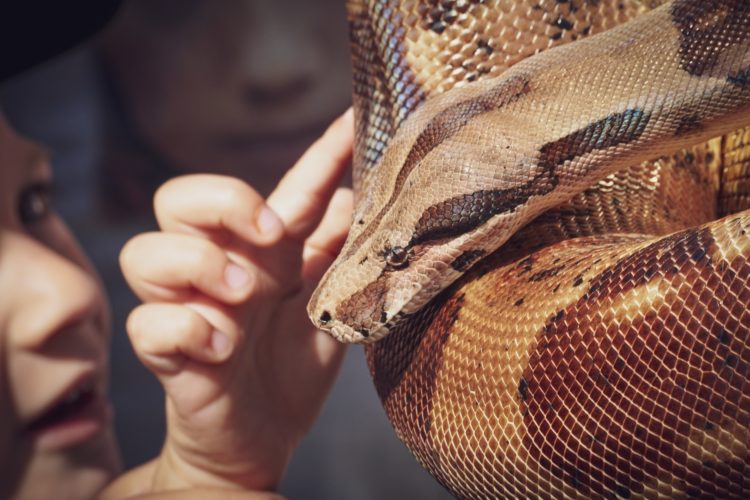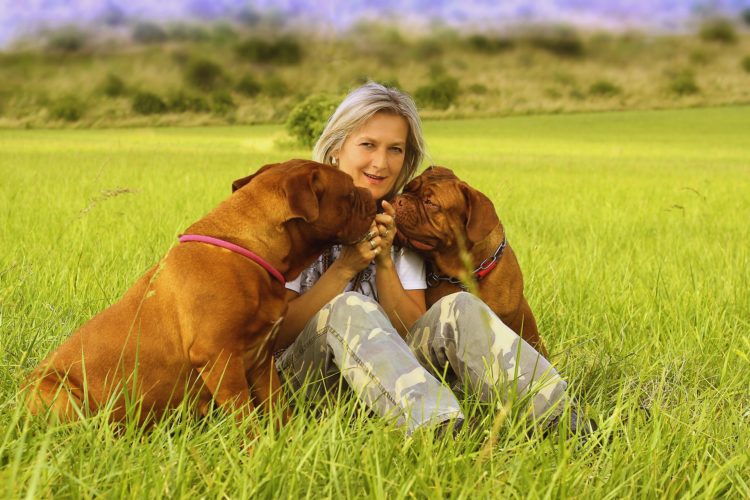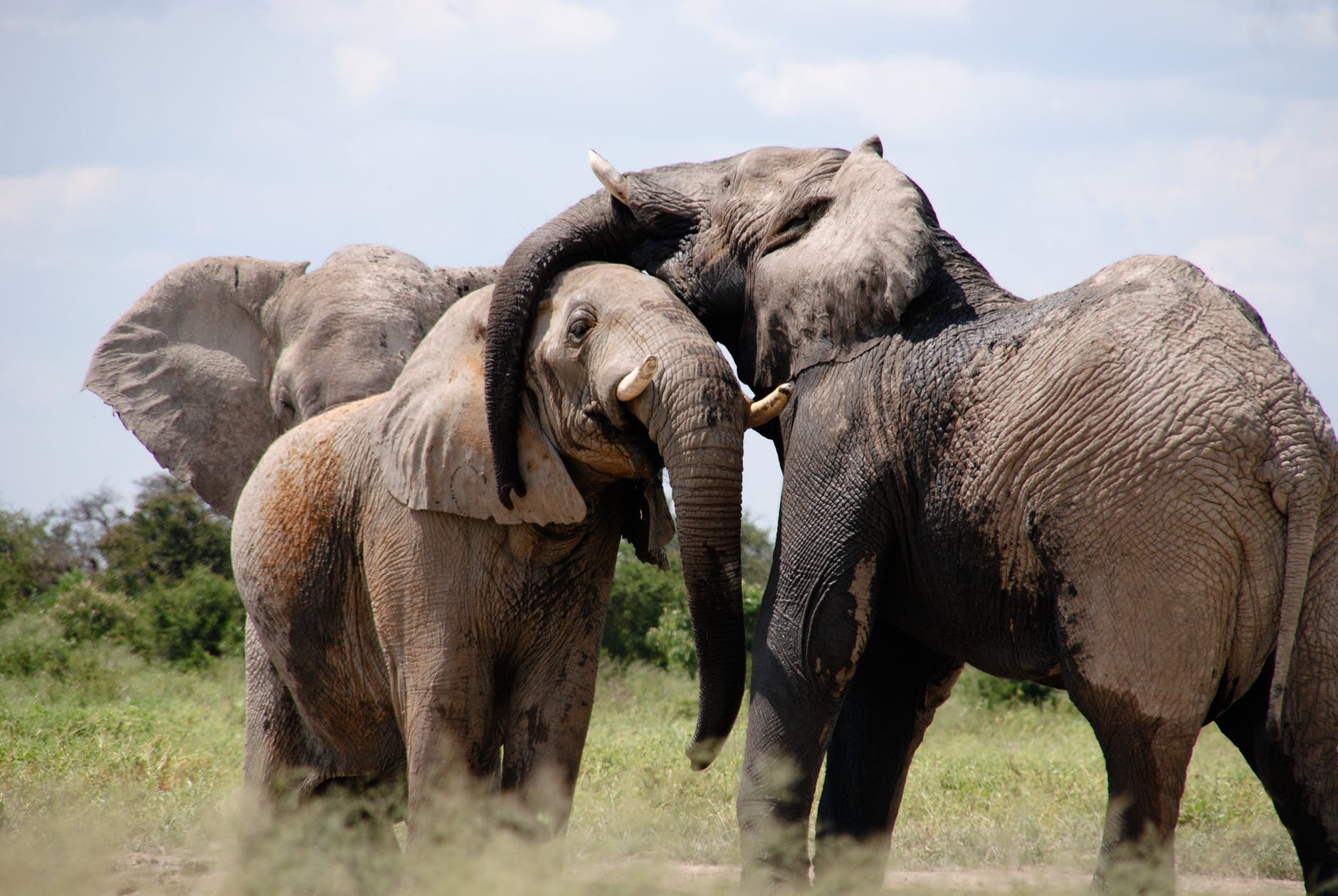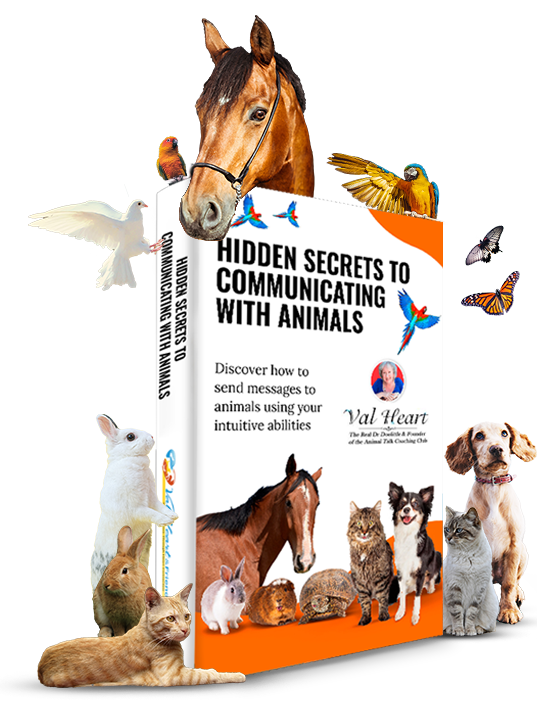This article was previously published January 28, 2015 and was updated on March 7, 2022
Learning animal communication can, at times, be quite challenging. Not because it’s hard to learn – it’s not!
In fact it’s easy for any animal lover to do once they know how to connect and tune in.
The challenge is to get out of your own ego (head) and move into feeling, being open in your heart.
When you are listening to your animal solely from your own brainiac perspective, you are simply not open to receiving information from others.
The helpful “left brain” takes over with judgment, logic and over-analysis.
When that comes into play it tends to muck up your receptivity which is your intuitive side, sometimes known as the gestalt, or “right brain”.
The first thing to do to communicate with an animal is this: set aside all of your preconceived notions about what should happen when you communicate.
If you don’t, you can easily get stuck in your expectations.
When you do that, you will have blocked your animal’s thoughts and feelings.
You will go completely off track.
You’ll find yourself frustrated and your animal disappointed.
Instead, notice when you begin thinking about what you should be able to hear, what you wish you could see or feel, what you want your animal to tell you.
Stop yourself right then and there.
Come back to your center, ground your energy and breathe deeply.
Then try again.
This time, instead of getting trapped in your left brain, try using your imagination.
Imagine you are one with your animal.
Let yourself feel how it feels to be their size, weight and body type.
What does the world look like from their perspective?
What does your fur or hair or fins or scales feel like?
How do you move about?

What do your senses tell you about the world around you?
This process helps you understand animals from their perspective, with minimum interference and misinterpretation.
It fosters communication, compassion, understanding, harmony and oneness with other beings, whatever their species.
To learn animal communication you need to practice often!
Frequent meditation is very helpful so that you can clear your mind, be open, receptive to new thoughts and feelings.
Adopting lifestyle changes that support your connection with nature, allows you time to unwind and unravel your busy mental activity, quieten the sometimes overwhelming static of busy brain, talking head syndrome.
TIP: Remember that you may not hear an audible voice in your head.
Animals often don’t respond at all the way you think they will or expect them to.
Animals also want to be heard, respected, and listened to like they’re important and wise, just like we do.
You may see a flash of color or an image on your internal mental monitor.
You may have a gut feeling or a visceral reaction.
Or you may simply have an uncanny knowing that you won’t be able to explain.
Animal communication can come in many different forms.
You’ll just know.
Many beginning students get worried, thinking this is just their imagination.
It can start out that way.
But that’s okay.
It can feel like just your imagination at first.
I promise that if you stay with it and keep practicing being fully present with animals, then at some point there will be a shift.
You will notice that all of a sudden you’re thinking thoughts that don’t seem to be your own because they are so unusual.
You may feel an emotion that comes from seemingly nowhere – that’s also not your own.
You’ll begin to have a real, true, honest knowing of that animal beyond your expectation.
Their viewpoint, their wisdom and their thoughts will start making more sense to you.
And if you just keep breathing and being one with the animal, you’ll be astonished at the depth and quality of the information you’ll be receiving!

Try This Practice Exercise:
Choose an animal to focus on, ask them to help you, and then imagine that you are them.
Take a moment to imagine that you can intuit how it feels to be them.
See how things look from their viewpoint.
What is it like to play, walk, run, and jump like they do?
How does it feel to sit like they sit?
Or, to eat what they like to eat?
Use your senses and allow the information to come to you without questioning it too much.
The experience of connecting and communicating with an animal will begin to unfold for you.
And when you do this right?
I promise that animal communication will change your life.
Want more?
If you’re ready to dive in then check out the How to Talk to Animals: Beginning Core Foundations Home Study Course.
This technique is taught in more depth, along with all the other fundamental basics that every animal communication student needs to know.
Go here to get started
~~~~~~~~~~~~~~~~~~~~~~~~~~~~~~~~~~~~~~~~~~~
Author: Val Heart is a leading animal communication expert, speaker, bestselling author & master healer. Val is often called The Real Life Dr Doolittle™ and Animal Communicator to the Stars.
© Copyright, Val Heart & Friends LLC. All Rights Reserved.
Photo by Artem Beliaikin from Pexels https://www.pexels.com/photo/adult-short-coated-tri-color-dog-879788/
Other articles you may be interested in:
Horse Whispering, Animal Communication that Gets Results with Your Horse, Dog or Cat
3 Reasons You Should Listen to Your Dog When They Tell You Something is Wrong
Pet Communication, Understanding the Importance of the Heart/Mind Connection







Hi Val, very wise words there. I’m practising animal communication too, although not as experienced as you. You are certainly right about coming back to centre when you don’t feel the information coming through. If I can sense the animal’s energy then I know we’re connected. I’ve found this to be very important as it stops the doubting and helps to make that connection again. Keep up the good work!